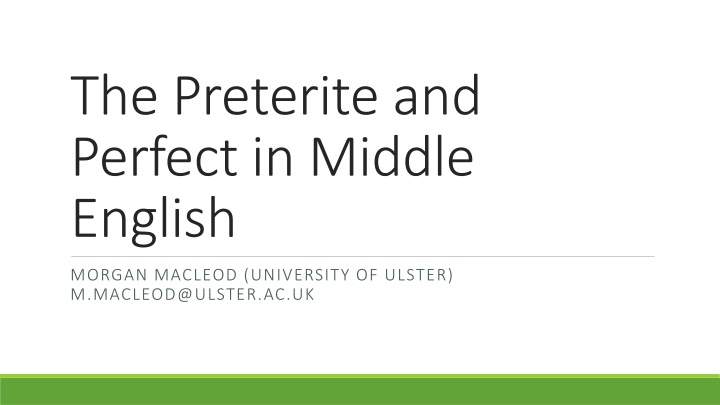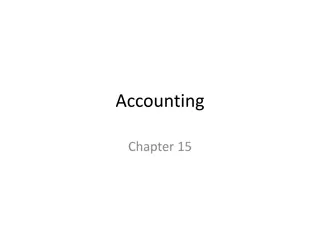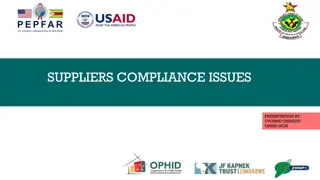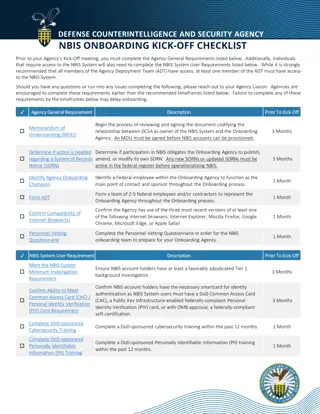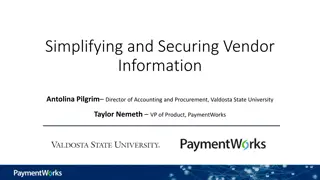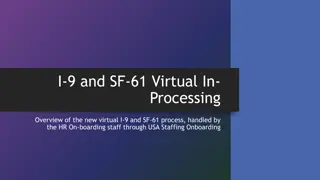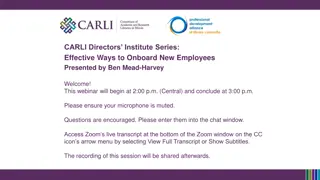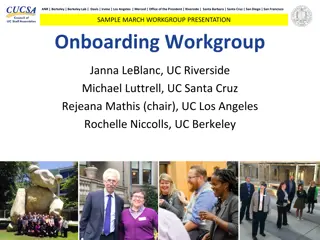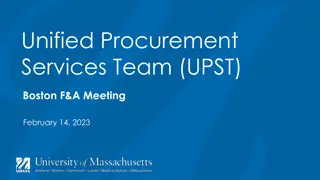Overview of PaymentWorks Supplier Onboarding System
PaymentWorks is a digital supplier onboarding software that ensures secure, compliant, and optimized business payments. Learn about its features, benefits, and how it streamlines vendor registration processes efficiently.
Download Presentation

Please find below an Image/Link to download the presentation.
The content on the website is provided AS IS for your information and personal use only. It may not be sold, licensed, or shared on other websites without obtaining consent from the author.If you encounter any issues during the download, it is possible that the publisher has removed the file from their server.
You are allowed to download the files provided on this website for personal or commercial use, subject to the condition that they are used lawfully. All files are the property of their respective owners.
The content on the website is provided AS IS for your information and personal use only. It may not be sold, licensed, or shared on other websites without obtaining consent from the author.
E N D
Presentation Transcript
The Preterite and Perfect in Middle English MORGAN MACLEOD (UNIVERSITY OF ULSTER) M.MACLEOD@ULSTER.AC.UK
Introduction The Proto-Germanic tense system had only two tenses, a present and a preterite By Old English, a periphrastic perfect involving habban have had developed: 1) in folc h f gesyngod Your people have sinned (Exod 32.7, cited in Mitchell 1985: I, 289) A similar formation involving wesan be also existed However, it has been questioned whether this ever became a true perfect (e.g. McFadden & Alexiadou 2010) In Old English, the preterite could still be used instead of either of these forms: 2) Ic heold nu nigon gear[ ] ines f der gestreon I have now held your father s property nine years ( LS I.21.42)
Introduction The variation in OE between the periphrastic perfect and the preterite can be explained in terms of two factors (see Macleod 2014): The Old English preterite had not yet developed a paradigmatic opposition to the perfect, so its use created no implicature that the perfect was inappropriate There is also some evidence that the preterite exhibited temporal polysemy of the sort seen in the Latin perfect (e.g. the compatibility with present-time adverbials such as nu now seen in (2)) Variation between the perfect and the preterite seems to have remained stable throughout the OE period, with no significant diachronic changes observable
Introduction The subsequent development from the Old English system towards the modern pattern has not been fully explored Previous examinations of Middle English (e.g. Mustanoja 1960, Fischer 1992) note the existence of forms that appear to deviate from the modern pattern However, no quantitative data have been available on the frequency of such forms, nor on the potential factors governing their distribution
Methodology The methodology of the present study is based on that of Macleod (2014) Texts were analysed to identify all situations for which a present perfect would be a pragmatically felicitous representation, and the relevant verbs were identified either as preterites or as perfects The corpus used was the Helsinki Corpus (Rissanen et al. 1996) As the analysis involves manual review of entire textual passages, a small corpus selected for balanced content was ideal The data presented here refer only to the earliest group of Middle English texts (MSS from 1150 1250) A preliminary survey of the following period was also performed It was found that examples differing from Modern English usage were too few to permit meaningful analysis
Old English v. Middle English OLD ENGLISH (FROM MACLEOD 2014) MIDDLE ENGLISH Preterite, 39, 12% Perfect, 95, 26% Preterite, 265, 74% Perfect, 277, 88% Preterite Perfect Preterite Perfect
Old English v. Middle English OLD ENGLISH (FROM MACLEOD 2014) MIDDLE ENGLISH (AFTER EXCLUSIONS) Preterite, 16, 6% Perfect, 95, 26% Preterite, 265, 74% Perfect, 258, 94% Preterite Perfect Preterite Perfect
Middle English An abrupt transition has taken place between the latest OE texts and the earliest ME texts In Middle English, the periphrastic perfect is now the normal, unmarked expression for this tense/aspect content The earliest stages of this process may have been obscured by the relative homogeneity of the OE textual record Early ME texts already show awareness of a clear opposition between preterite and perfect: 3) e ridde god uss hafe don / e Laferrd Crist onn er e, / urrh att he aff hiss a henn lif The Lord Christ has done us the third good on earth in that He gave His own life (Orm 197) Here the same situation is described with a preterite to position it within a historical narrative and with a perfect to highlight its continuing relevance No comparable examples within Old English have been identified
Middle English If most uses of the preterite and perfect in Middle English already reflected the same patterns of distribution found in Modern English, an explanation is needed for the remaining exceptions It is suggested here that most exceptions can be explained on the basis of two factors The position of Middle English within the observed spectrum of variation in the use of the preterite The sequence-of-tense rules in Middle English These factors interact to different degrees to produce the observed examples
Variation in the use of the preterite Varieties of Modern English are known to differ in their tense preferences in certain environments (e.g. Elsness 1997) 4) I already ate (AmE) 5) I ve already eaten (BrE) This variation can be interpreted as a difference not in the temporal meaning of the forms involved, but in the pragmatic presuppositions created by their use (cf. Portner 2003)
Variation in the use of the preterite Some ME examples can be interpreted on the hypothesis that at least some speakers of Middle English used the preterite as freely as or more freely than in modern American English: 6) Ich ne seh him neauer I never saw him (St Juliana 100.15) 7) e uttreste is se iesternesse of helle, ar n ure iete liht ne cam The outermost is the darkness of Hell, where light never yet came (Vices & Virtues 17.30) 8) mare wunder ilomp Greater wonders (have) happened (Ancrene Wisse 32.9)
Sequence of tenses A language s sequence of tenses govern the ways in which primary (present-like) tenses can be combined with secondary (past-like) tenses Much research on sequence-of-tense phenomena (e.g. Abusch 1997, Gennari 2003) has focused on the behaviour of verbs embedded under a secondary tense: Mary said, I m ill. 9) 10) Mary said that she was ill. Languages differ in the rules governing these phenomena. In some languages (e.g. Japanese), a sentence such as (10) can only correspond to a direct quotation such as (11): 11) Mary said, I was ill.
Sequence of tenses Sequence-of-tense phenomena can also be observed for verbs embedded under a primary tense: Scenario: Yesterday John said, I m in France Today he returned from France 12) I spoke to John and he said that he was in France 13) I spoke to John and he says that he s been in France 14) *I spoke to John and he says that he s in France (makes incorrect claim about John s current location) 15) ??I spoke to John and he says that he was in France (seems to make incorrect claim about John s original utterance)
Sequence of tenses Some ME examples can be interpreted on the hypothesis that Middle English differed from Modern English in allowing sentences such as (15): 16) Ich onkie mine Drihte[ ] et he swulche mildce; sent to moncunne. I thank my Lord that He sent such mercy to mankind (Brut I.384.7424) 17) hwuch-se he mei preouin urh his boc[ ] he[ ] wrahtte in al his lif-si e. whatever he may prove through his book, that he wrought in all his lifetime (Sawles Warde 170.13) 18) e worse hire scal i-wur en[ ] e ich auere bi eat. o er bi- ete m ie Worse shall befall them than I ever knew or may know (Brut I.82.1588)
Conclusion The use of the preterite and perfect in Middle English already approaches the modern distribution in the majority of cases The few exceptions may be due to variation in the pragmatic presuppositions associated with the use of the preterite, and in the Middle English sequence of tenses Additional data may be needed to substantiate these hypotheses and to identify other possible differences between Middle English and Modern English in their use of tense
References Abusch, Dorit, 1997. Sequence of tense and temporal de re , Linguistics and Philosophy 20, 1 40. Elsness, Johan, 1997. The Perfect and Preterite in Contemporary and Earlier English, Berlin: de Gruyter Fischer, Olga, 1992. Syntax , in Norman Blake (ed.), The Cambridge History of the English Language, vol. 2, Cambridge: Cambridge University Press, 207 408. Gennari, Silvia P., 2003. Tense meanings and temporal interpretation , Journal of Semantics 20 35 71. Macleod, Morgan, 2014. Synchronic variation in the Old English perfect , Transactions of the Philological Society 112, 319 343. Mitchell, Bruce, 1985. Old English Syntax, 2 vols, Oxford: Clarendon. Mustanoja, Tauno F., 1960. A Middle English Syntax, Helsinki: Societ N ophilologique. Portner, Paul, 2003. The (temporal) semantics and (modal) pragmatics of the perfect , Linguistics and Philosophy 26, 459 510. Rissanen, Matti, et al. (eds.) 1996. The Helsinki Corpus of English Texts, Helsinki: University of Finland, electronic.
